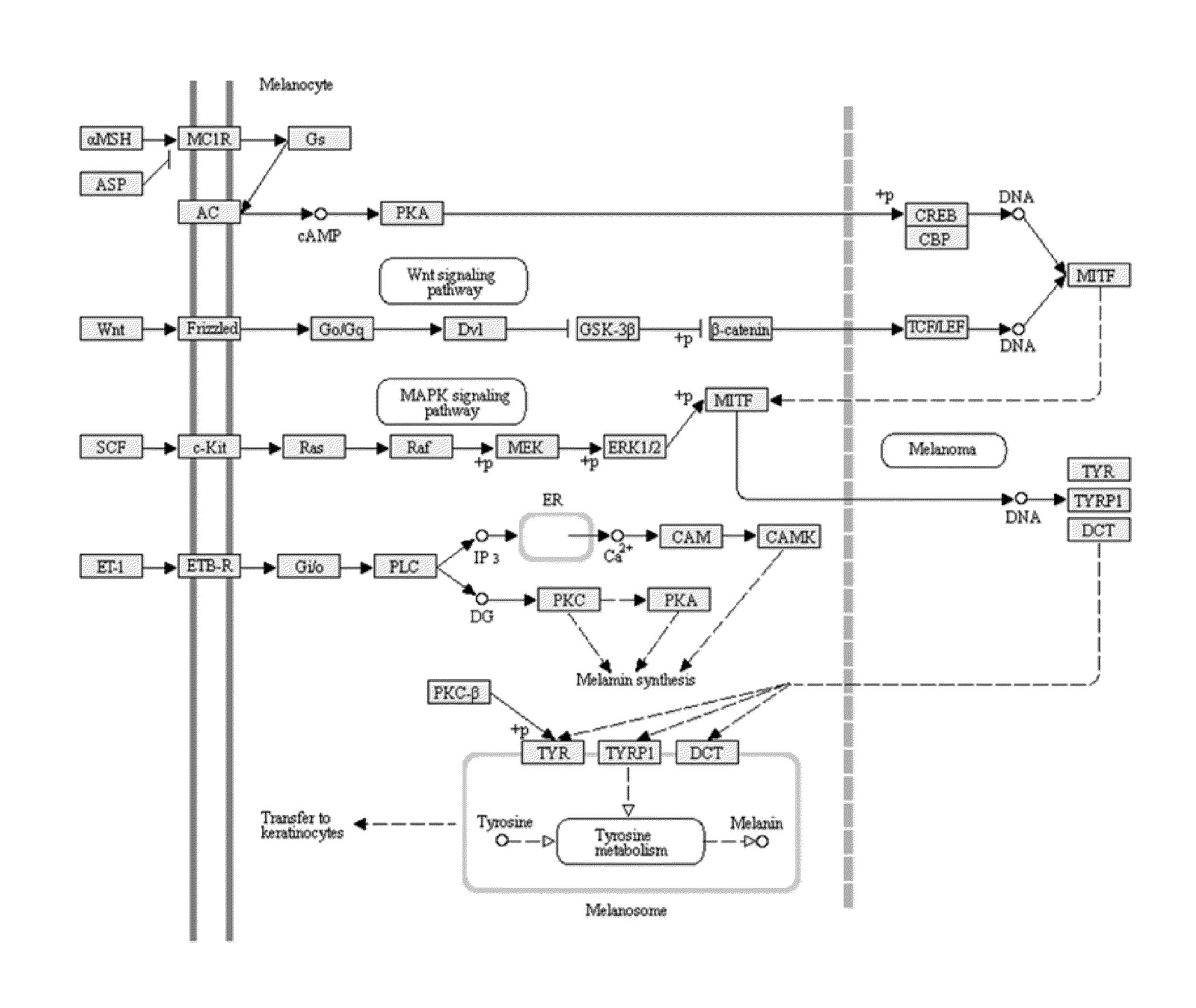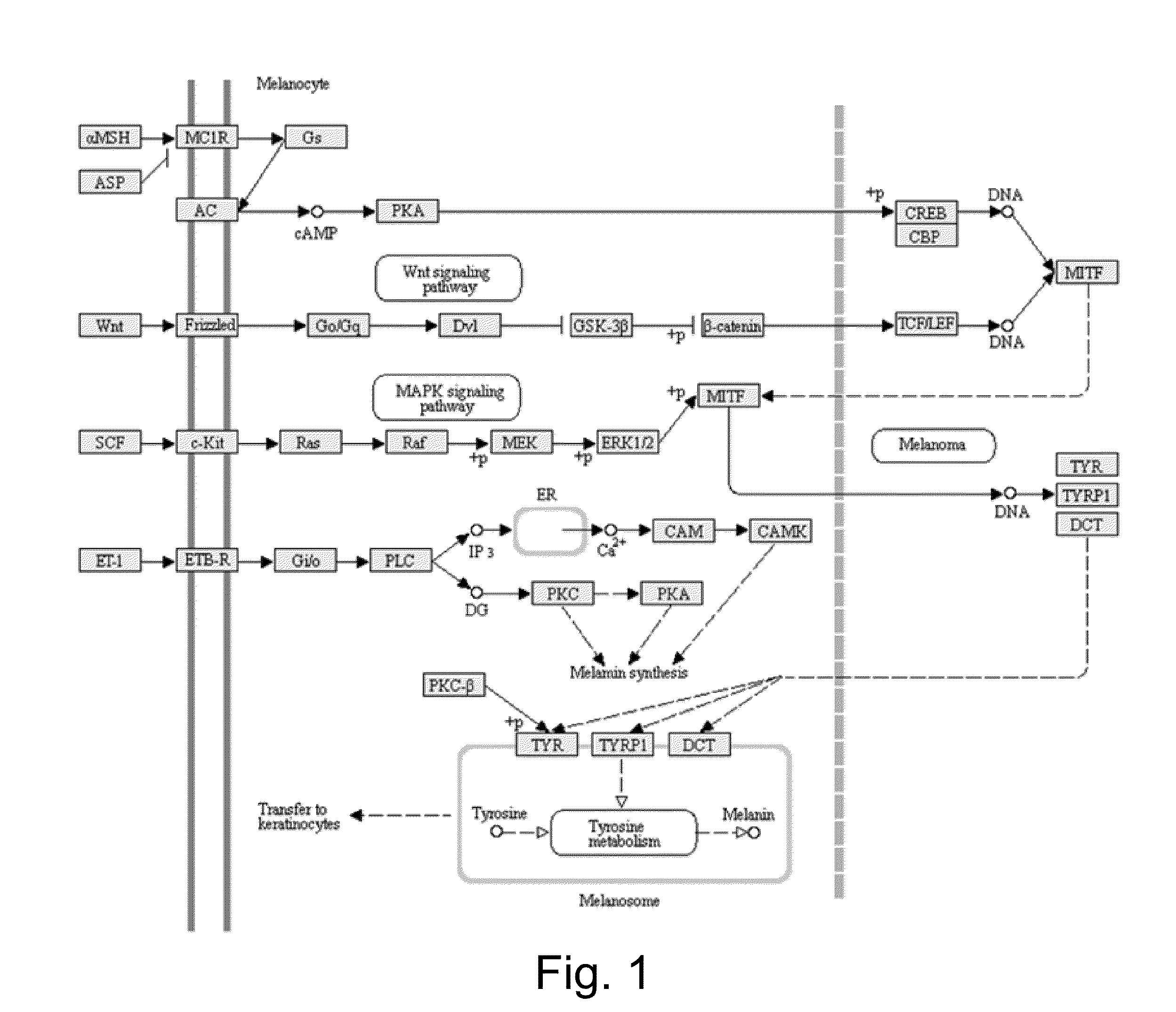Methods and mechanisms involving hyperpigmentation particularly for african american skin
a hyperpigmentation and african american skin technology, applied in the field of hyperpigmentation disorders, can solve the problems of post-inflammatory hyperpigmentation (pih), increased uv sensitivity and other complications, and achieve the effect of increasing treatment options and other advantages
- Summary
- Abstract
- Description
- Claims
- Application Information
AI Technical Summary
Benefits of technology
Problems solved by technology
Method used
Image
Examples
example 1
[0049]A DNA microarray is fabricated using genes encoding components of pathways associated with hyperpigmented or hypopigmented skin. Use of specific genes and pathways, as well as gene set analysis, allows the microarray to be used in the diagnosing of pigment disorders or predicting the response of such disorders to specific drugs or other therapies. The microarray may also be used to screen potential new drug and other therapies for the treatment of pigment disorders.
example 2
[0050]An effective amount of a substance is applied topically to the skin to prevent hyper-pigmentation. The substance may be applied prophylactically when hyperpigmentation may be expected to occur. For example, a person with a history of acne and subsequent hyper-pigmentation of healed pimples may apply the substance to pimples as they heal to deter hyper-pigmentation. A pregnant woman may apply the substance to her face to prevent or reduce hyperpigmentation as a result of hormonal changes. The substance may act, e.g., by blocking pathways associated with melanogenesis or dendrite formation.
example 3
[0051]An effective amount of a substance is applied topically to the skin to treat hyperpigmentation. The substance may be applied to lesions or areas of the skin that are hyperpigmented for any reason. The substance may contain a mixture of different active ingredients. The substance may activate signaling pathways in cells in the hyperpigmented region, thereby causing the cells to revert to an expression profile associated with non-hyperpigmented skin.
PUM
| Property | Measurement | Unit |
|---|---|---|
| Fraction | aaaaa | aaaaa |
| Fraction | aaaaa | aaaaa |
| Fraction | aaaaa | aaaaa |
Abstract
Description
Claims
Application Information
 Login to View More
Login to View More - R&D
- Intellectual Property
- Life Sciences
- Materials
- Tech Scout
- Unparalleled Data Quality
- Higher Quality Content
- 60% Fewer Hallucinations
Browse by: Latest US Patents, China's latest patents, Technical Efficacy Thesaurus, Application Domain, Technology Topic, Popular Technical Reports.
© 2025 PatSnap. All rights reserved.Legal|Privacy policy|Modern Slavery Act Transparency Statement|Sitemap|About US| Contact US: help@patsnap.com


